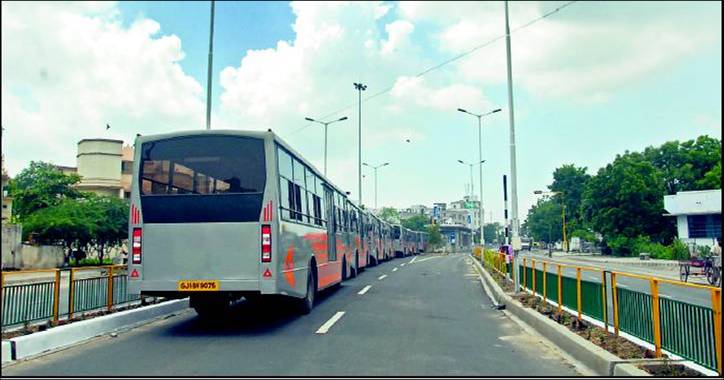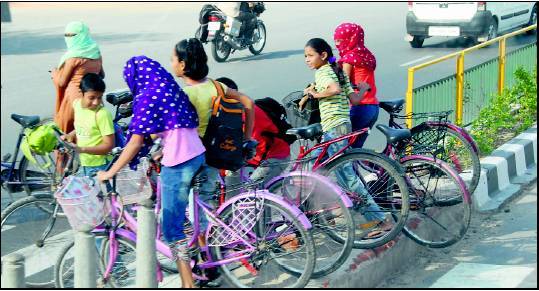Taking learnings from Delhi BRT, Gujarat has successuly implemented its BRT which has got accolades from Transport Research Bureau, Washington and recently awarded Sustainable Transport Award.
Here is the coverage:
This report is also available at: http://uttipec.nic.in/writereaddata/mainlinkFile/File206.doc
In 3 months, Ahmedabad BRT a winner
Source: The Times of India dated 21.01.2010
Ironed Out Delhi Flaws To Notch Up Ridership Of 35,000, Wins International Acclaim
Megha Suri Singh | TNN
New Delhi: Bus Rapid Transit (BRT) are dreaded words in the capital but the urban transportation concept has become immensely popular in Ahmedabad since the pilot corridor is nothing like its Delhi counterpart. In fact, they have learnt from Delhi’s mistakes to make it a successful venture.
The three-month-old corridor introduced all that Delhi lacked — it was started with Global Positioning System (GPS)-enabled buses, a passenger information system (PIS) and closed bus shelters with smart-card based ticketing at the bus-stops and not inside buses. The first corridor was planned in ‘‘lowdensity areas’’ and operated free for people for the first two months.

When Delhi’s tryst with BRT began almost two years ago, with trial runs on the pilot 5.8-km stretch between Ambedkar Nagar and Moolchand, the irritants were congestion in the car lane which was squeezed to just two lanes, signal cycles going for a toss with long waiting time at intersections, bus shelters located at crossings adding to the chaos and a long waiting time for buses. In Ahmedabad, the BRT corridor stretches over 16.5 km in an area which, unlike congested south Delhi, is still being developed by the government.
“There are large tracts of open space along the corridor and offices are being developed along them. This is a transit-oriented model of development where transportation has come first and development later,’’ said an official. The average traffic counts at intersections are just 3000-4000 PCUs hourly as against Delhi BRT where some intersections have counts as high as 20,000-30,000 PCUs per hour. It is a closed BRT system. So, the buses don’t go out and other buses are not allowed in. The buses are fitted with devices which signals can read and give them free passage. The Intelligent Traffic Signals (ITS) system planned for the Delhi corridor is yet to come up.
The bus-stops are located 200 metres before the intersections and have platform screen doors operated by sensors to prevent people from getting hit by buses passing by. The doors open when a bus arrives and all buses, standard floor ones, stop in perfect alignment with the bus shelters. Delhi spent much more on buying low-floor buses to provide stepless entry to people, but even two years later, drivers seldom stop the bus in alignment with the platform.
‘‘We started with a ridership of 17,000 people daily in October last year. This has grown to 35,000 in three months,’’ said Prof Shivanand Swamy of CEPT University, Ahmedabad, which conceptualised the BRT model.
It recently got the Sustainable Transport Award by Institute for Transportation and Development Policy (ITDP) in Washington.
SERVING ITS PURPOSE The BRT corridor stretches over 16.5 km in Ahmedabad and has Global Positioning System (GPS)-enabled buses, a passenger information system (PIS) and closed bus shelters with smart-card based ticketing at bus-stops and not inside buses. It’s also located in an area that is not densely populated.

